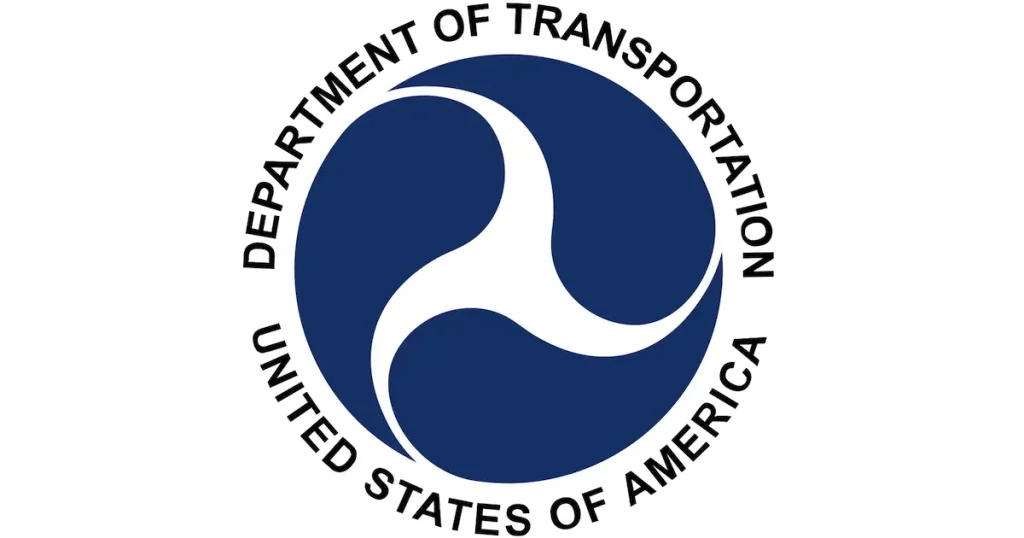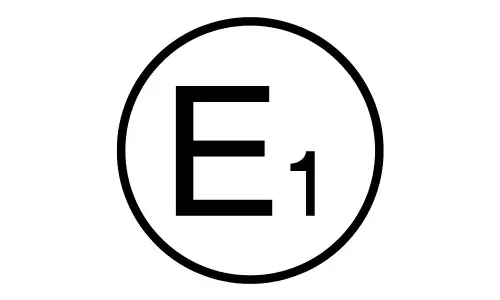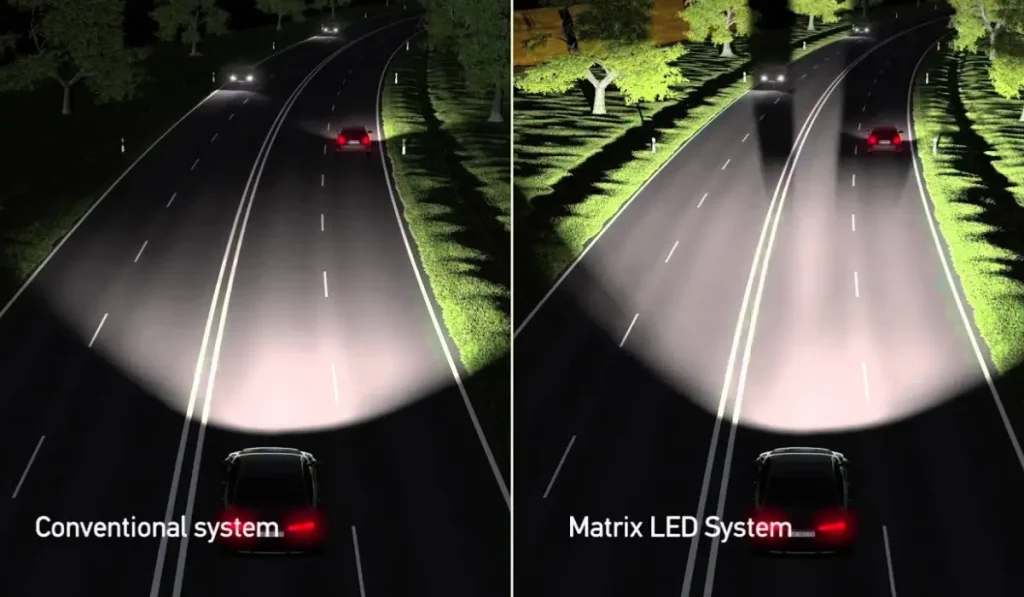Are you confused about DOT, ECE, and SAE?
When you’re about to buy replacement LED headlights, you need to understand the most basic product certification standards for headlights.
In this blog post, we will delve into the core differences among DOT vs. ECE vs. SAE headlights standards.
DOT vs. ECE vs. SAE Headlights Standards Quick Explained
DOT, ECE, and SAE are the three most recognized certification standards.
- DOT is the legal standard of the U.S. Department of Transportation, focusing on headlight glare control.
- ECE is the standard in Europe and other regions, focusing on headlights having a clear cutoff line.
- SAE is the organization that sets the rules and standards, and DOT usually adopts its standards.
Now that you know their basic concepts, the key is to understand that these standards are not suggestions, but rules that dictate how headlights must work on the road.
Starting with the U.S. DOT standard.
What is DOT Certification?
DOT stands for the U.S. Department of Transportation, responsible for overseeing Federal Motor Vehicle Safety Standard (FMVSS) 108.

- Applicable Regions: The United States and parts of Canada; it is typically a legally mandatory standard in the U.S. market.
- Core Function: Ensuring that headlight beam patterns, glare control, brightness, and markings meet the requirements of the FMVSS 108.
As a professional automotive lighting manufacturer and supplier in China, we place great importance on DOT compliance.
This is also an indispensable aspect of our product design and manufacturing for our clients in the US market.
The DOT standard is designed for the unique road conditions in the United States, because the USA roads are typically long, straight highways with a much lower density than in Europe.
Key Features of the DOT Standard:

Beam Pattern: The biggest difference between the DOT standard and ordinary certification standards lies in the beam pattern.
The DOT standard uses an asymmetrical low beam pattern, allowing more light to shine upwards above the cutoff line to illuminate road signs. However, it also limits the amount of upward-shielding light to prevent glare.
Testing Focus: Emphasis is placed on light intensity and distribution, durability, and color temperature (white light is typically 3,000–5,500K).
Identification: The headlight lens must display the word “DOT” and the manufacturer’s code.
Approval Process: Each headlight manufacturer self-certifies, and then the National Highway Traffic Safety Administration (NHTSA) conducts post-market compliance checks.
What is ECE Certification?
ECE certification is based on the ECE Regulation issued by the United Nations Economic Commission for Europe (UNECE), which currently includes 132 standards.

It mainly includes Regulation 48 (R48) and related standards, such as the R112 standard for headlights. These regulations are widely adopted in Europe, Asia, Australia, and many other regions.
- Applicable Regions: Europe and most global markets (including parts of Asia and the Middle East).
PS: Products with ECE certification can enter 54 contracting states (such as the EU and Japan).
- Core Focus: Emphasizes strict beam cutoff, glare control, compatibility, and consistency; formal type approval is usually required for market entry.
We have many of our clients in Europe, so we understand that the ECE concept differs from the DOT standard.
This is because European roads are typically narrower, more winding, and traffic is denser. The most important objective of the ECE standard is to minimize potential glare and reduce driver safety accidents.
Key Features of the ECE Standard:

Beam pattern: The low beam should form a clear “Z” shaped cutoff line, with a design that is lower on the left and higher on the right (to prevent glare to oncoming drivers).
Imagine a straight horizontal optical light; below the beam, the road is illuminated; above the beam, the road is almost dark—this is the famous sharp cutoff line.
Testing focus: Tests include light distribution, glare control, HID/xenon lamp auto-leveling, and environmental durability.
Marking: Products compliant with ECE standards will bear the “E-Mark”.
An “E” will be displayed within a circle on the lens, followed by a number. This number indicates which country the product has been certified in.
Approval process: Mandatory third-party testing and certification are required before entering the market.
The ECE standard is more globally unified and allows the adoption of advanced technologies such as LEDs and adaptive lighting systems earlier than the DOT standard.
What is SAE Certification?
SAE stands for Society of Automotive Engineers. Founded in 1905, it is the largest international academic organization for automotive engineering.

SAE standards are widely used in the automotive and other industries and are adopted by the US national standards.
- Applicable Regions: Widely referenced and applied globally, often used as a technical standard and methodology for design and testing.
- Core Positioning: Provides standardized guidance for optical, mechanical, and testing methods, but is not a direct, mandatory market access standard.
You often see SAE and DOT together. Are they the same?
This confusion can make parts selection difficult. I will clarify the important role of SAE and its differences from DOT.
I often explain to customers: SAE is the Society of Automotive Engineers. They don’t set laws, but their standards and procedures are used by organizations like the DOT.
Therefore, our AKE LED engineers usually spend their time reviewing SAE documents, constantly reading detailed SAE manuals, and repeatedly testing products.
Key Features of SAE Standards:

Beam Pattern: Similar to DOT, it uses an asymmetric pattern specifically tailored for US roads.
Test Focus: Detailed specifications for light output, beam direction, vibration resistance, and corrosion resistance.
Marking: May include “SAE” followed by letters (e.g., SAE HR indicates replaceable high beams).
Purpose: SAE standards frequently influence DOT regulations (FMVSS 108 references many SAE tests). They are also used as design guidelines by car LED light manufacturers in most markets.
SAE standards are not legally mandatory, but they ensure high-quality aftermarket parts.
You need to understand that SAE focuses more on industry best practices, not the enforcement.
How SAE and DOT Work Together
Understanding this relationship is simple. The U.S. government, through the Department of Transportation (DOT), enacts legislation (FMVSS 108). However, this legislation doesn’t specify all the details; rather, it mandates that headlights must comply with the requirements outlined in SAE documents.
Therefore, to comply with DOT standards, each manufacturer must adhere to the guidelines established by SAE.
DOT VS. ECE VS. SAE Headlights Side-by-Side Comparison

| Aspect | DOT (USA/Canada) | ECE (Europe/International) | SAE (Industry Standard) |
| Organization | U.S. DOT (FMVSS 108) | UN ECE (R48, R112, etc.) | SAE International |
| Beam Pattern | Asymmetric (sharp left cutoff, right kick-up) | Symmetric (flat cutoff, 15° right kick-up) | Similar to DOT, engineering specs |
| Brightness Limit | 500-3000 Candela | 140,000 Candela | Recommended 500 to 3000 Candela |
| Color Temperature | 5000K to 6500K(similar to daylight) | 4300K to 6000K(white light) | 4300K to 6000K |
| Adaptive Lighting | Limited | Allowed | Allowed |
| Traffic Side | Right-hand drive (drive on the right) | Left-hand drive (drive on left); adaptable | Primarily for right-hand traffic |
| Approval | Manufacturer self-certification | Third-party type approval | Voluntary; influences DOT/ECE |
| Glare Control | Strict for oncoming traffic | Emphasizes anti-glare + auto-leveling | Detailed photometric tests |
| Technology | Allows HID/LED with restrictions | Faster adoption of LEDs/adaptive | Performance benchmarks |
| Marking | “DOT” on the lens | “E” + country code | “SAE” + codes |
| Legal Requirement | Mandatory in North America | Mandatory in EU/aligned countries | Not mandatory; quality indicator |
Why B2B Buyers Should Know DOT, ECE & SAE LED Standards
In the global automotive market, headlights purchased in Hong Kong may be manufactured in a Guangzhou factory, meeting European standards, but ultimately installed on a vehicle in Los Angeles or an off-road truck in Dubai.
As LED headlights increasingly dominate the new car and aftermarket markets, understanding DOT VS. ECE VS. SAE Headlights standards is no longer optional for global importers; it’s mandatory.
These standards determine the legality, safety, and resale value of the products.
Legality Depends on Where You Drive—Not Where You Buy
Headlights that are perfectly legal in country A may result in fines, but maybe inspection failures, or even vehicle impoundment in country B.
- DOT = Legal in the US and Canada
Any car registered or driven on public roads must have DOT-certified headlights. Headlights without DOT certification are illegal.
- ECE = Legal in Europe, the UK, Japan, Australia, South Korea, South Africa, and over 50 other countries
Hong Kong’s traffic system is influenced by the UK, uses the ECE standard. Headlights with the “E” mark comply with road regulations in Hong Kong and throughout the EU.
- SAE is not legally mandatory but is a behavioral benchmark.
It is widely recognized in North America and often exceeds the minimum standards of the US Department of Transportation (DOT).
Beam Patterns Are Designed for Traffic Systems

Even small differences in LED headlight design can lead to beam misalignment and potentially cause glare for drivers up to 200 meters away.
| Standard | Traffic Side | Low Beam Cutoff | Risk if Used Wrong |
| DOT | Drive on the right | Sharp left cutoff + right kick-up | Blinds EU/Asian oncoming traffic |
| ECE | Drive on the left | Flat cutoff + 15° right kick-up | Poor roadside sign visibility in the USA |
| SAE | Aligns with DOT | Similar to DOT | Safe in NA; not ideal elsewhere |
LED Technology Varies by Standard
Not all LED headlights are the same, and not all standards can apply the latest technology at the same speed.
| Feature | DOT | ECE | SAE |
| LED Headlights | Allowed since 2018 (with caveats) | Approved since ~2012 | Sets performance benchmarks |
| Adaptive Driving Beam (ADB) | Still restricted (2023 partial approval) | Widely allowed (matrix LEDs) | Testing protocols exist |
| Color Temperature | 3,000–5,500K (white only) | Up to 6,000K allowed | No legal limit; quality focus |
| Glare Control | Strict horizontal cutoff | Auto-leveling often required | Photometric precision |
Tips for importers:
ECE-certified matrix LED headlights (such as Hella or Koito) offer advanced glare-free high beams—legal in Hong Kong and the EU, but not fully legal in the US.

Warranty, Insurance, and Resale Value
Using non-compliant headlights will not only void your lighting warranty but also lead to the following problems:
Insurance Claim Denied: In nighttime accidents, insurance companies may argue that improper lighting was a contributing factor.
Failed Inspections: Hong Kong’s IVE, Europe’s MOT, and US state vehicle inspections all check headlight markings.
Depreciated Resale Value: Modified vehicles with “illegal” lights sell for less, especially to fleet buyers or exporters.
Whether you’re sourcing 1,000 LED headlights from Alibaba or buying directly from a factory, DOT、ECE、and SAE are your global compass.
Should know your market’s legal standard.
Need to match the beam pattern. In today’s connected world, a box of headlights can travel across three continents. Therefore, buyers shouldn’t just focus on lumen output; they should also seek certified and legal headlights.
Conclusion
DOT and ECE are the laws and regulations of the market where your vehicle lights are sold.
SAE provides technical guideline standards.
Choosing the right certificate standard can ensure your vehicle is safe and compliant with road traffic regulations.
Get Started Today
Are you looking for a certified LED headlight manufacturer to help you produce headlights?
AKE LED, with 20 years of experience in headlight manufacturing, is one of the top choices in the industry.
AKE provides high-performance LED headlights that meet international standards such as DOT, ECE, SAE, RoHS, and CE. This ensures that our products not only comply with road regulations in many local countries but are also safe and durable.
Whether you are a distributor, dealer, or automotive parts supplier, if you want to provide your customers with certified, reliable, and long-term stable LED headlights, then AKE is a brand you can trust in the global market.

